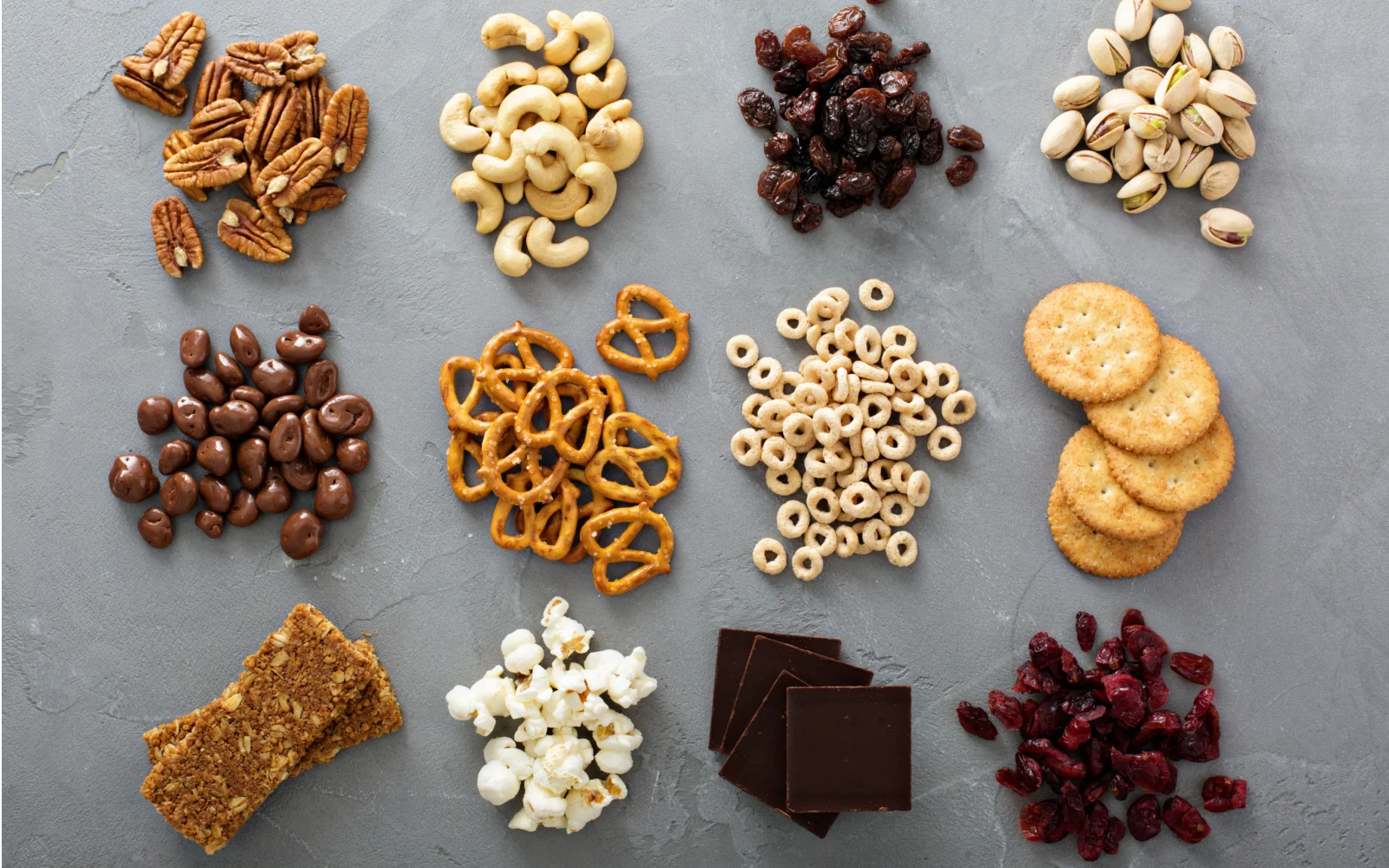Mid-flight munchies can strike at any time, but can you bring snacks on a plane? TSA rules prohibit some snacks, so read up on what’s allowed on the plane to ensure you’re covered and avoid potential issues.
As long as you know the general rules and restrictions for bringing snacks on your flight, you’ll be fine!
We’ll show you when you can bring snacks on a plane, what types of snacks are prohibited, and how to pack your snacks in your carry-on or personal item for the fastest security clearance below.
Can You Bring Snacks on a Plane?
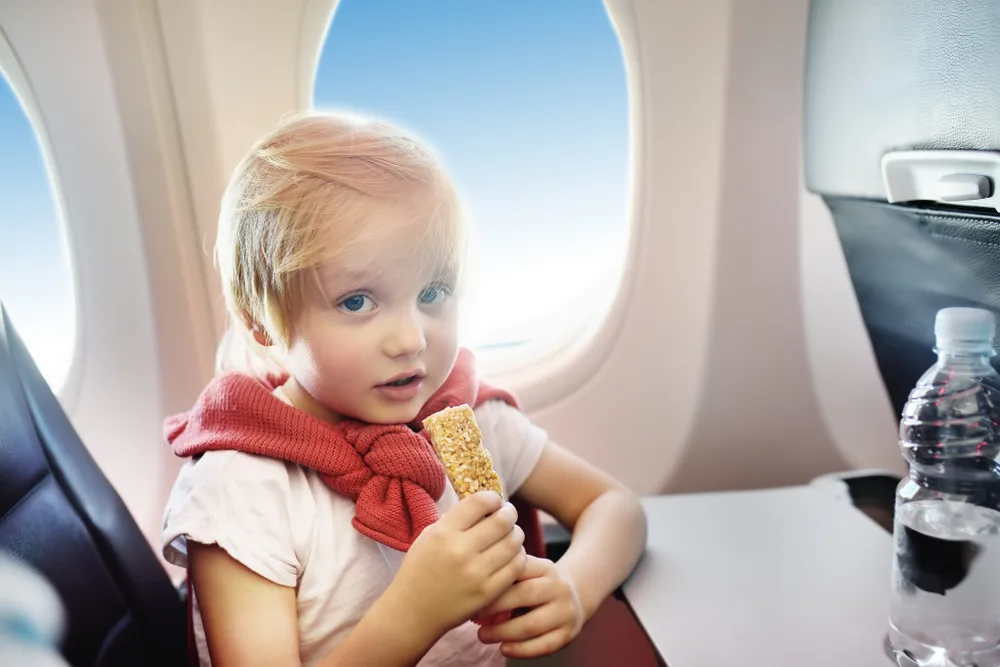
Maria Sbytova/Shutterstock
You might’ve heard that you can’t bring certain snacks on a plane, or if you’re a fan of shows like To Catch a Smuggler, you’ll often see passengers being fined or forced to throw away some food items when flying internationally.
So can you bring snacks on a plane, and if so, what are the restrictions set by the Transportation Security Administration (TSA)?
You can bring snacks on a plane, and the good news is that many of the most popular snack foods in America are allowed on flights without restrictions.
Chips, crackers, cookies, nuts, granola bars, popcorn – these are all examples of snacks that are allowed on a plane with no issues.
Even more substantial snacks, like sandwiches and wraps, salads, pizza, and pasta are allowed!
But other snacks, like hummus, peanut butter, salsa, and yogurt, could land you in hot water with the TSA.
We’ll show you what snacks are allowed and prohibited (or limited) on a plane next, cover the detailed TSA rules for bringing snacks onboard, and talk about special exceptions for babies and toddlers and medically necessary foods/drinks.
What Snacks Are Allowed on a Plane?
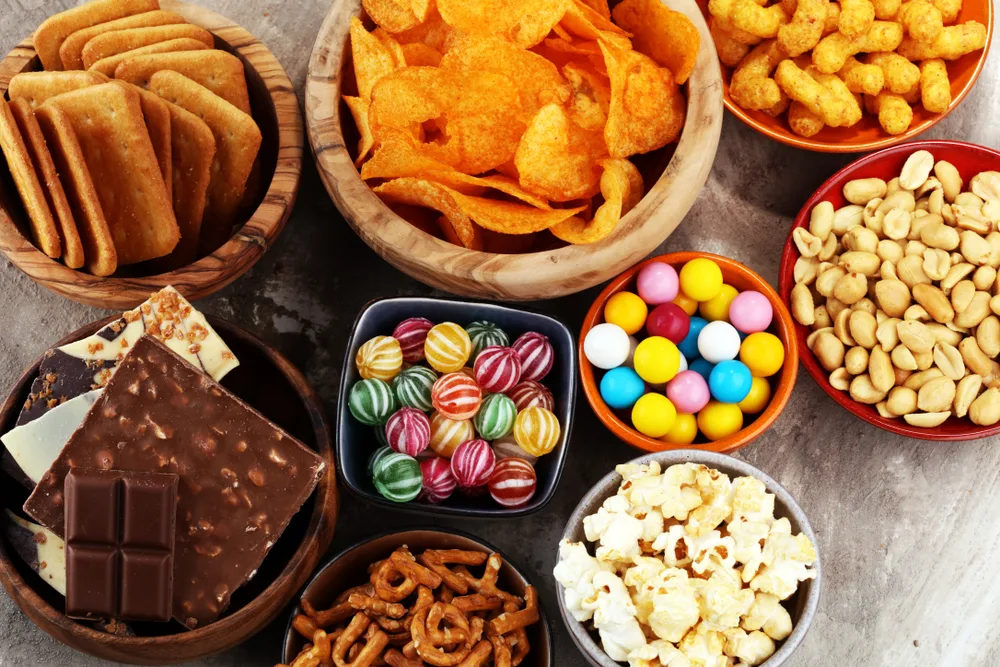
beats1/Shutterstock
Bringing snacks on a plane is generally a pretty straightforward process – most of the common snack foods we all love to munch on are allowed without restrictions according to TSA rules.
But TSA rules limit liquids, creams, gels, pastes, and aerosols along with restrictions on fresh fruits and vegetables for travelers flying to or from certain destinations.
Let’s take a look at a comprehensive list of allowed snack foods on a plane:
- Baby food and formula/breastmilk
- Candy
- Cookies
- Crackers and chips
- Dried fruit
- Fresh fruits and veggies*
- Granola and granola bars
- Hard cheeses
- Instant oatmeal
- Jerky or meat sticks
- Juice, water, or other drinks**
- Nuts
- Pies and cakes
- Pizza
- Popcorn
- Pretzels
- Protein bars or balls
- Protein powder
- Salads
- Sandwiches
- Tamales
- Wraps
As you can see, the list includes most of the foods you’d consider snacking on during a flight and doesn’t limit too many of your noshing options.
Snacks that are combinations of some of the allowed foods, like trail mix or snack mixes, are also allowed without limitations.
If you’re bringing protein powder onboard, it can be stowed in your carry-on bag or personal item but will need to be separately screened.
Try to keep the amount no more than 12 ounces – otherwise, the TSA recommends placing protein powder in your checked bag.
Bringing your dog or cat onboard? You’ll be relieved to know that solid pet food (yes, even the “moist” kind) is allowed on the plane per TSA rules. Wet food has to be in quantities 3.4 ounces or smaller.
*Fresh fruits and veggies are prohibited to bring on a plane if you’re flying to the U.S. mainland from Hawaii, Puerto Rico, or the U.S. Virgin Islands. Fresh fruits and veggies are usually not allowed to bring from the U.S. to foreign countries on international flights due to the risk of pest and disease spread, so if you bring them, make sure to finish them on the flight.
**Juice, water, and other drinks are only allowed in amounts no greater than 3.4 ounces each unless they’re intended for a baby or toddler onboard, which makes them “medically necessary” and removes the capacity limits.
What Snacks Are Prohibited on a Plane?
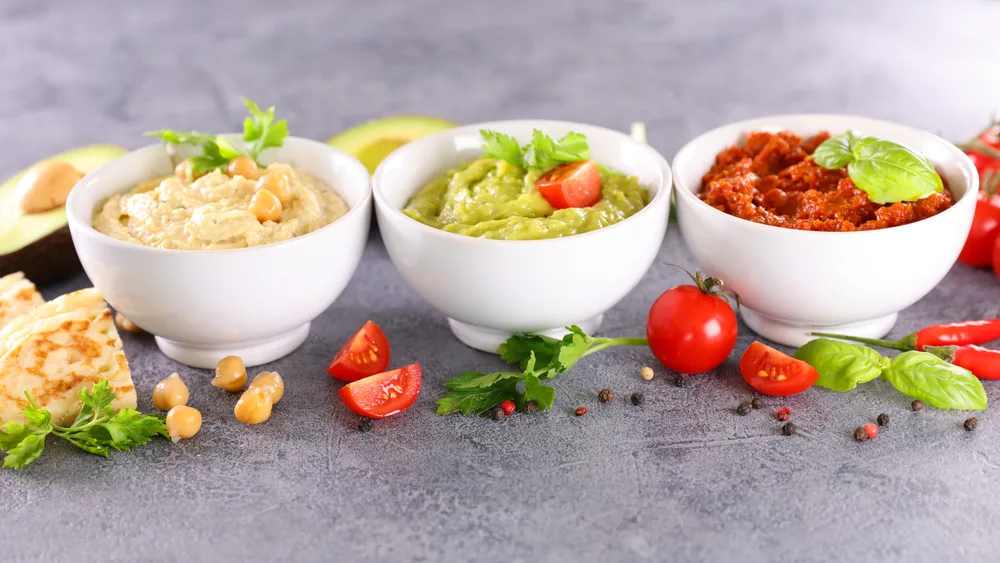
Chatham172/Shutterstock
The TSA doesn’t impose many restrictions on snacks you can bring on a plane, but there are a few limitations you should know about to avoid issues at the security checkpoint.
TSA rules prohibit you from bringing liquid or gel-based snacks in amounts larger than 3.4 ounces in your carry-on bag or personal item.
You might think that only applies to actual liquids – water, soda, broth, etc. – but the TSA’s definition of “liquid” goes a little further to include any aerosol or substance that flows in a liquid, gel, cream, or paste manner.
That means some common snack foods are prohibited to bring in your carry-on bag in amounts greater than 3.4 ounces/100 milliliters, including:
- Creamy or soft cheeses, like Brie or cream cheese
- Dips and spreads, like hummus
- Gelatin, like Jello
- Guacamole
- Honey
- Ice cream
- Jams and jellies
- Liquids (soda, water, broth, etc.)
- Oils
- Peanut butter
- Pudding
- Salad dressing
- Salsa
- Sauces
- Soups
- Syrup
- Vinegar
- Yogurt
Keep in mind that these snacks and beverage items are not completely prohibited – you can still bring them, but only if they’re packed in containers that are 3.4 ounces (100 mL) or less each.
Look for individually-packaged servings of the items above to ensure your snacks will be TSA-approved. For example, gelatin snack packs are about 3.25 ounces each and peanut butter squeeze packs are about 1.15 ounces each.
If you’re set on bringing your favorite dipping sauce, salsa, spread, or salad dressing, just grab individual servings pre-packaged in sizes smaller than 3.4 ounces for your trip.
There are additional rules for bringing items considered liquids in your carry-on bag or personal item. Let’s refer to the TSA 3-1-1 rule:
- 3: Liquid items must be in amounts no greater than 3.4 ounces or 100 milliliters. Partially-emptied containers larger than 3.4 ounces are not allowed.
- 1: All liquid items in their 3.4 ounce or smaller containers have to fit into one clear quart-sized bag that seals up
- 1: You’re limited to bringing one clear quart-sized bag with individual containers of liquid items
Note that a single quart-sized, sealable bag (like a ziplock bag) can fit about 9 containers in this size or more if your containers are smaller than 3.4 ounces each.
Learn more by reading our Complete TSA Carry-On Liquid Guide next.
Bringing your pet onboard? Wet pet food must be in individual containers no larger than 3.4 ounces, but dry or “moist” pet food is allowed in any reasonable quantity.
Exceptions to TSA Snack and Liquid Rules
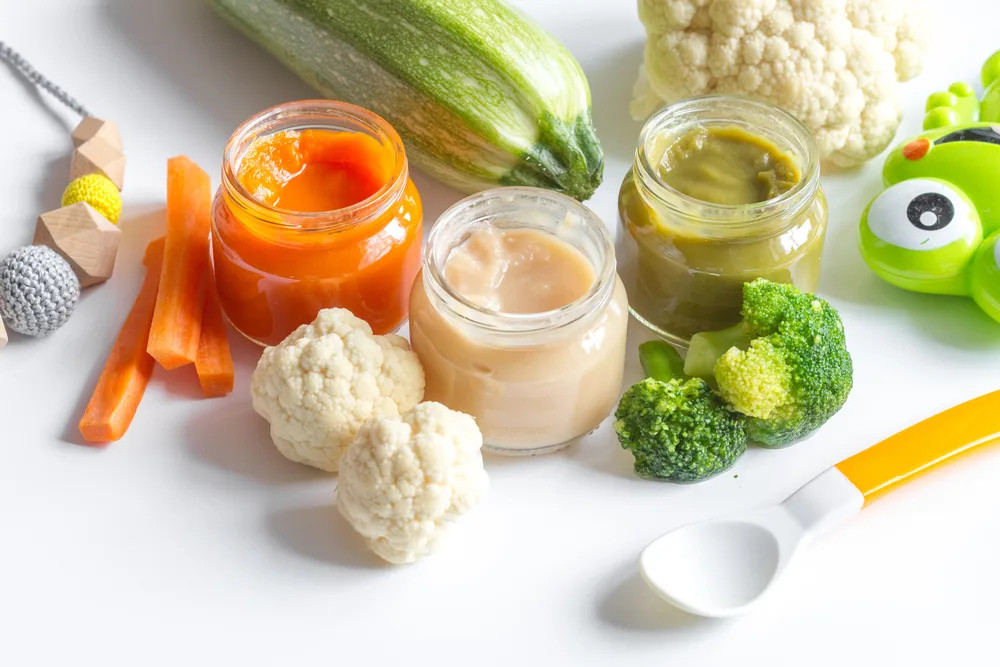
279photo Studio/Shutterstock
As with any rule, there are exceptions! The TSA does relax their rules on snacks and liquid items in a few special circumstances. If a liquid item is deemed medically necessary, it’s not subject to the 3.4-ounce limit.
If a snack food or liquid item meets any of the following criteria, the TSA should exempt it from the 3-1-1 rule:
- You/your child needs it during your flight or once you arrive at your destination
- The item isn’t available at the airport after the security checkpoint
- The item isn’t available at your destination
Here are some of the current exceptions to TSA liquid rules for items that may be brought as a food or snack:
- Baby food/purees
- Breastmilk
- Glucose-raising liquids/gels
- Ice packs or freezer packs for liquids/medications
- Infant formula
- Juice, electrolyte drinks, or water for babies/toddlers or diabetics
Since a baby or toddler’s breastmilk, formula, juice, baby food, or other drink/food items are considered medically necessary, the TSA does not limit the amount to 3.4 ounces.
You can bring as much as is needed for the flight and they don’t need to fit inside a single quart-sized bag like other liquids.
Some people don’t realize that your child or infant does not need to be present on the flight for you to bring child-related supplies that are exempt from the usual liquid rules.
The TSA understands that keeping some medically-necessary liquids and similar items at the right temperature is necessary, too. Ice packs, freezer packs, and frozen gel packs are allowed with these items to keep them chilled.
Diabetic passengers who may need to bring juice or small tubes of glucose gel or cake icing to raise blood sugar in the event of a hypoglycemic episode on the plane can take advantage of these exemptions, too.
These items aren’t limited to their usual 3.4-ounce size when medically necessary. You should be able to quickly access the foods and drinks you need to stay healthy when you’re on the plane!
With that said, understand that you’ll need to be upfront with the TSA officer about the exempted items you’re carrying. Let them know what you have in your carry-on and remove those items so they can be separately screened.
How to Bring Snacks on a Plane
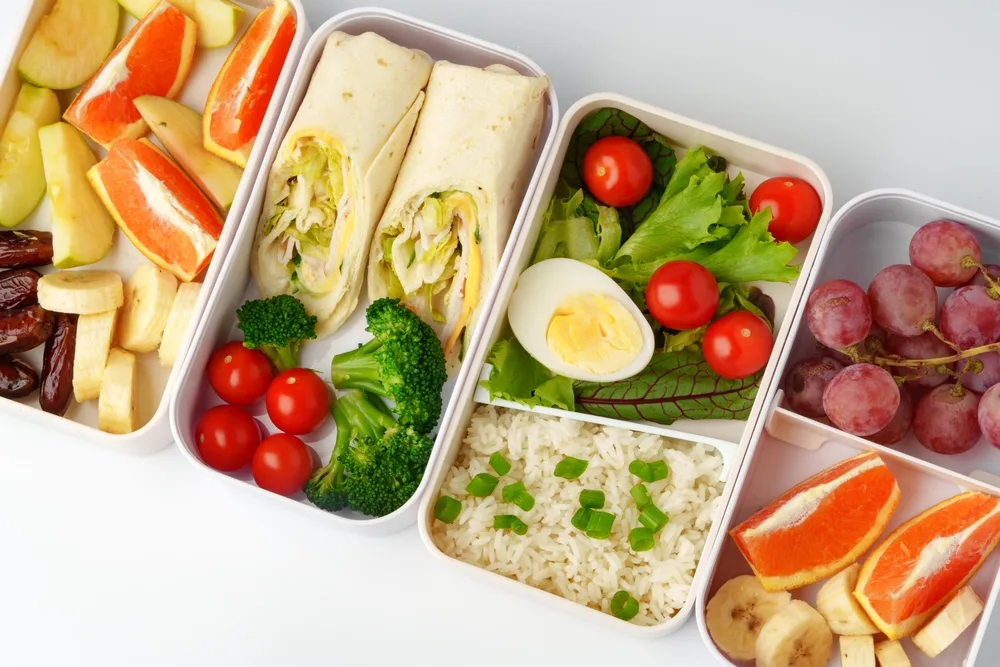
FabrikaSimf/Shutterstock
Allowed snacks can be brought on your flight in any manner you choose – in their original package, placed into a ziplock bag, popped into a reusable container, etc.
If you want to eat your snacks on the plane, you’ll want to place them in your carry-on bag or personal item (like a purse, small backpack, tote bag, etc.).
It’s a good idea to keep your snack foods in a convenient bag within your carry-on for easy removal during the security screening process.
You’ll need to remove these items from your carry-on during X-ray screening so TSA agents can get a clear reading on each item. This includes any snack food, like solid foods and powders.
Your onboard snacking experience can be improved by bringing a few extras along that you may need with your foods:
- Napkins
- Plastic forks/spoons (knives are prohibited)
- Resealable containers for unfinished foods
It’s best to avoid bringing any food along that would need to be cut with a knife, since knives are prohibited by the TSA. You can always pre-cut such foods into bite-sized pieces if you really want to bring them along!
To be considerate of your fellow passengers, consider avoiding bringing snack foods that crunch loudly or have a pungent or strong odor.
This includes heavily-spiced or seasoned foods, strong-smelling foods like sauerkraut or fish, or pungent items like durian fruit (which many airlines have actually banned).
Things to Consider
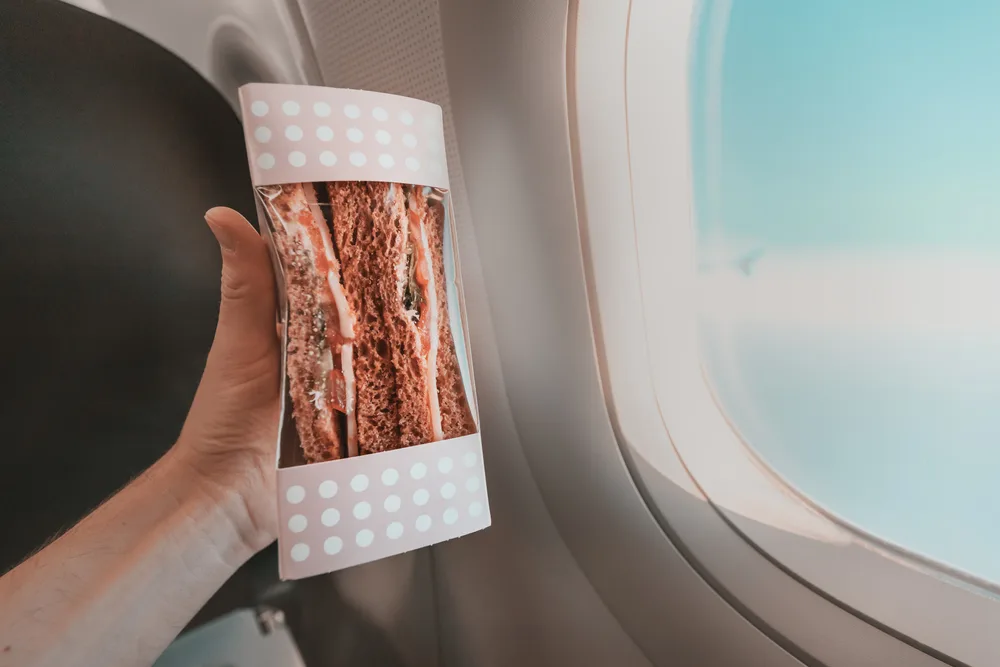
frantic00/Shutterstock
Can you bring snacks on a plane? Definitely, and you absolutely should tote some in-flight snacks with you to make your air experience as pleasant as possible!
But there are a few more things you should keep in mind when you’re planning to pack snacks on a plane.
- Pack all your snacks in one bag. Packing all your snack foods together in a single bag inside your personal item or carry-on bag will make it easier to get through security and access your snacks during the flight. It can be a gallon-sized ziplock bag, a zippered pouch, a grocery bag – whatever you have on hand will work.
- Check the sizes of liquid-like snack items. If you’re bringing snack items that are limited to 3.4 ounces (100 mL) per container, like peanut butter or guacamole, just look for individual packs that meet the size requirement and follow the 3-1-1 rule by placing them all into a single quart-sized clear bag in your carry-on.
- Know about X-ray screening snack safety. While there are no adverse effects associated with eating snacks or drinking liquids that have been X-rayed in airport security, some people are wary about having these items traditionally screened. If you’re worried about having formula, breastmilk, snack foods, or medication liquids screened with the cabinet x-ray system, let a TSA agent know and see if they’ll allow alternative screening with Advanced Imaging Technology or other methods.
- Only pack what you’ll eat on the flight in your carry-on. The rules for packing snack and liquid-like items are much more relaxed for checked baggage, so don’t pack more than you’ll need for the flight in your carry-on bag. Consider the length of your flight and make sure to eat something more substantial before you fly to limit how many snacks you’ll need. This leaves more space for other items in your carry-on or personal item.
Frequently Asked Questions
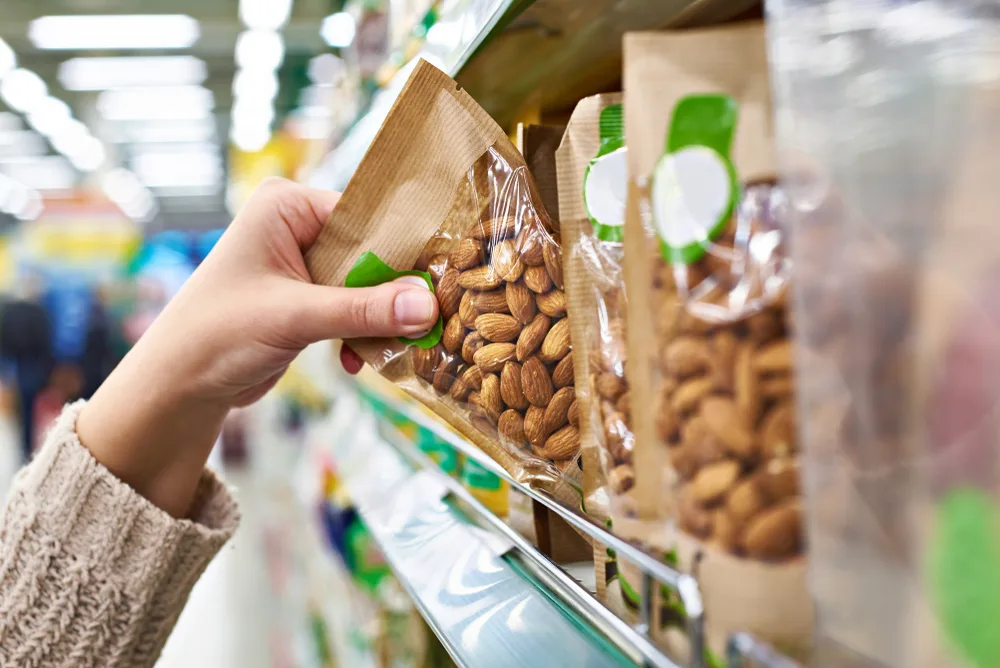
Sergey Ryzhov/Shutterstock
It’s not just “Can you bring snacks on a plane” – travelers have a lot of questions about the specifics on food items they can or can’t bring on a flight. Let’s take a look at the FAQs to learn more.
What snacks are not allowed on a plane?
Snacks that are in liquid, gel, cream, or paste form are not allowed on a plane in amounts greater than 3.4 oz. or 100 mL per container. This includes soft cheese, peanut butter, salsa, dipping sauce, yogurt, etc.
You're allowed to bring these items as long as they are packaged and sealed in containers that are no larger than 3.4 oz. If you need to bring more than that, pack it in your checked baggage.
Can I eat my own snacks on a plane?
Yes, you can eat your own snacks on a plane and bring almost any snack food you like. From chips and cookies to pizza and salad, bringing your own snacks on a flight is a great way to stave off hunger and have your favorites close at hand.
Just make sure you’re following the TSA rules when it comes to liquid or liquid-like snack items, keeping those to containers 3.4 oz. or less and sealing them all in a clear quart-sized bag.
Is there a limit on how much snacks you can bring on a plane?
There is no limit on how much or many snacks you can bring in your carry-on bag or personal item on a plane. If it fits, you can bring it! The only exception is for liquid or liquid-like snack items.
For liquid, gel, cream, or paste-like foods, you’ll need to limit them to containers that are no larger than 3.4 oz. each and package them all in a single quart-sized, clear bag in your carry-on.
Can you take snacks in hand luggage on a plane?
Yes, you can take snacks in your hand luggage (carry-on bag or personal item) on a plane. This makes it easy to have your favorite snacks close by when you’re in the air.
The only limits are for liquid or liquid-like snack items like peanut butter, cream cheese, yogurt, beverages, and dipping sauces. Items for babies and toddlers are exempt from the TSA liquid rules.
What kind of food can you take on a plane?
You can take almost any kind of food on a plane, from common snack foods like chips and trail mix to more substantial foods like pizza, pasta, meats, and cakes.
As long as the food isn’t considered a liquid by TSA standards, it’s fine to bring in any amount.
So, Can You Bring Snacks on a Plane?
There you have it – the answer to “Can you bring snacks on a plane?” is a definitive yes. You can bring just about any snack food you want on a flight with you, but it’s important to know which foods are prohibited or limited.
The only real prohibitions the TSA imposes on food are for fresh fruits and veggies, and that only applies if you’re flying from Hawaii, Puerto Rico, or the U.S. Virgin Islands to the U.S. mainland.
The TSA also has limitations on certain foods and items that are considered liquids or liquid-like. For these types of items, you’re limited to bringing as many 3.4 oz. or less containers as will fit into a single clear quart-sized bag.
This includes drinks like water, soda, and juice as well as foods like peanut butter, salsa, sauces, dressings, and gelatin.
Even then, there are special exceptions to the liquid rule that allows more than 3.4 oz. Parents with babies or toddlers and people with medical conditions (like diabetes) that need liquid or liquid-like items onboard can bring as much as needed.
With these rules in mind, don’t hesitate to bring your snacks on a plane and nibble on your favorites as you fly to your destination!
You Might Also Like: Just How Safe Is Flying Commercial in 2024?



